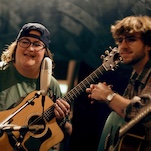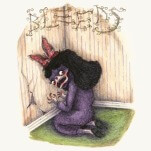Life-Changing Cookbooks: Darina Allen’s Ballymaloe Cooking School Cookbook
Paste's column on the cookbooks that shape who we are.
Photos by Carrie HavranekI didn’t have one of those formative, tugging-at-mom’s apron strings experiences that characterize so many people’s first encounters with cooking. Instead, I learned how to bake first, before I even learned how to boil water. I acquired basic cooking skills in college, which sustained me through to my mid-20s, by which point I owned about a half dozen cookbooks, including How to Cook Everything, which is dog-eared, splattered and broken-spined.
Something flipped when I moved in with my now-husband. I didn’t magically turn into Miss Domesticity, but remarkably, my foray into becoming what I like to call a Serious Kitchen Person emerged organically, without a whole hell of a lot of reflection. Maybe because feeding ourselves is one of those tasks we perform out of necessity (and I was still a music writer back then, dying to become the next Ann Powers or, before her, Ellen Willis), I couldn’t possibly have conceptualized the route. There was, however, a pivotal event that solidified my love of cooking and projected me onto my path: my honeymoon in Ireland and Darina Allen’s Ballymaloe House Cooking School Cookbook.
We didn’t just pick Ballymaloe House on a lark. I had been baking scones and other easy things from the slim little volume Myrtle Allen Cooks at Ballymaloe House, which a friend bought for me sometime after college. (Maybe this was the gateway cookbook?) I knew about this destination in Shanagarry in the south of Ireland, about 40 minutes slightly southeast from Cork city center. Myrtle Allen is often considered the Julia Child of Ireland and compared to Alice Waters; the stone, ivy-covered Georgian inn, Ballymaloe House, is located on a working farm that feeds the stellar restaurant. Allen was way ahead of her time, and not because of the whole farm-to-table ethos. Ireland’s compact nature and agricultural roots tend to facilitate that fairly easily, even though its grocery stores weren’t necessarily oriented toward supporting local farmers. Most chefs in the 1960s were not rewriting their menus on a daily basis to prioritize fresh and local offerings, but Myrtle Allen was.
We honeymooned in Ireland, a place I nearly lost my husband to years ago, so deep is his affection for the country. For about a thousand bucks per person, we bought a package that included airfare and two weeks of bed and breakfast vouchers. We decided to ditch the vouchers for a couple of nights and made reservations for Ballymaloe before we left. For dinner on our first night, I ate freshly caught cod (from less than ten miles away at Ballycotton) in a mustard sauce, served with beets. I don’t think I knew I was eating at a restaurant that once received a Michelin star, but I knew the place mattered. I can still picture the vivid contrast, the way the shocking magenta hue swirled in with electric yellow mustard. The dish, along with the cart of gorgeous local cheeses that was wheeled out after dinner, impressed itself upon me, but it was more of indelible imprint, one whose full impact took time to surface.
Several months later Darina Allen Ballymaloe Cooking School Cookbook was released, written by Myrtle’s daughter-in-law and a celebrity chef in her own right. Later that year, my husband gave it to me for Christmas. I immediately started with the recipe for brown bread—a whole wheat-based soda bread, and a hearty, Irish breadbasket staple. The recipe doesn’t call for wholemeal flour, which is more authentic, but I suspect in 2002 that ingredient had not yet started appearing on grocery shelves the way it does now. I then progressed to the brown yeast bread and honestly can’t remember what was next. I may have become distracted by another Ballymaloe book. But that’s another story.

-

-

-

-

-

-

-

-

-

-

-

-

-

-

-

-

-

-

-

-

-

-

-

-

-

-

-

-

-

-

-

-

-

-

-

-

-

-

-

-










































